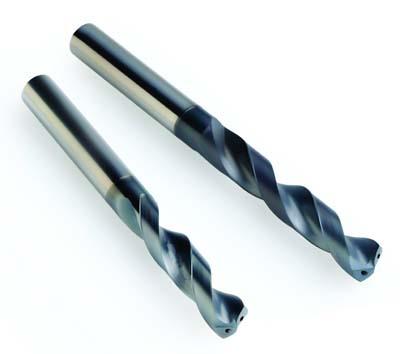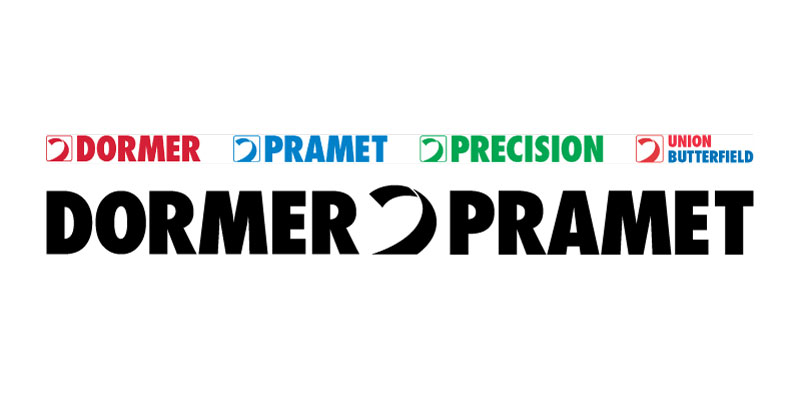
The Elect S drill range represents the first products launched by Precision Dormer developed specifically for the machining of materials known collectively as Heat Resistant Super Alloys (HRSA).
Including high temperature resistant alloys such as Titanium, Inconel and Waspalloy, these materials can be difficult to machine for two principle reasons, as David Goulbourne, Dormer's development manager for drilling products, explains, "Firstly, they generate high cutting forces during machining, leading to high pressure and heat, which in turn tends to result in work hardening. Secondly, because they are able to withstand high temperatures, the heat generated during drilling is retained within the workpiece and transferred to the tool, resulting in premature drill failure."
In addition to internal coolant holes, several features of the Elect S drills combine to lower the occurrence of work hardening. These include a body back taper that promotes a free, continuous cutting action as well as high quality, accurate holes. A self centering 140 degree point angle, cylindrical margin and positive cutting edge geometry also work to minimise frictional cutting forces, leading to consistent tool performance and minimal work hardening.
Another key attribute of the Elect S™ drills is a Smooth-Flow coating that acts as a thermal barrier, protecting the substrate from the extreme heat generated at the cutting edge. This also has a low coefficient of friction, resulting in smooth and efficient chip evacuation and, in turn, extended tool life.
Available in two lengths to support drilling to 3 x diameter (R507) and 5 x diameter (R503), the Elect S drills will be of particular interest to anyone involved in the production of high value components or requiring a high degree of precision, such as aerospace subcontracting, oil and gas and nuclear industries.
Contact Details
Related Glossary Terms
- alloys
alloys
Substances having metallic properties and being composed of two or more chemical elements of which at least one is a metal.
- centering
centering
1. Process of locating the center of a workpiece to be mounted on centers. 2. Process of mounting the workpiece concentric to the machine spindle. See centers.
- coolant
coolant
Fluid that reduces temperature buildup at the tool/workpiece interface during machining. Normally takes the form of a liquid such as soluble or chemical mixtures (semisynthetic, synthetic) but can be pressurized air or other gas. Because of water’s ability to absorb great quantities of heat, it is widely used as a coolant and vehicle for various cutting compounds, with the water-to-compound ratio varying with the machining task. See cutting fluid; semisynthetic cutting fluid; soluble-oil cutting fluid; synthetic cutting fluid.
- hardening
hardening
Process of increasing the surface hardness of a part. It is accomplished by heating a piece of steel to a temperature within or above its critical range and then cooling (or quenching) it rapidly. In any heat-treatment operation, the rate of heating is important. Heat flows from the exterior to the interior of steel at a definite rate. If the steel is heated too quickly, the outside becomes hotter than the inside and the desired uniform structure cannot be obtained. If a piece is irregular in shape, a slow heating rate is essential to prevent warping and cracking. The heavier the section, the longer the heating time must be to achieve uniform results. Even after the correct temperature has been reached, the piece should be held at the temperature for a sufficient period of time to permit its thickest section to attain a uniform temperature. See workhardening.
- point angle
point angle
Included angle at the point of a twist drill or similar tool; for general-purpose tools, the point angle is typically 118°.

